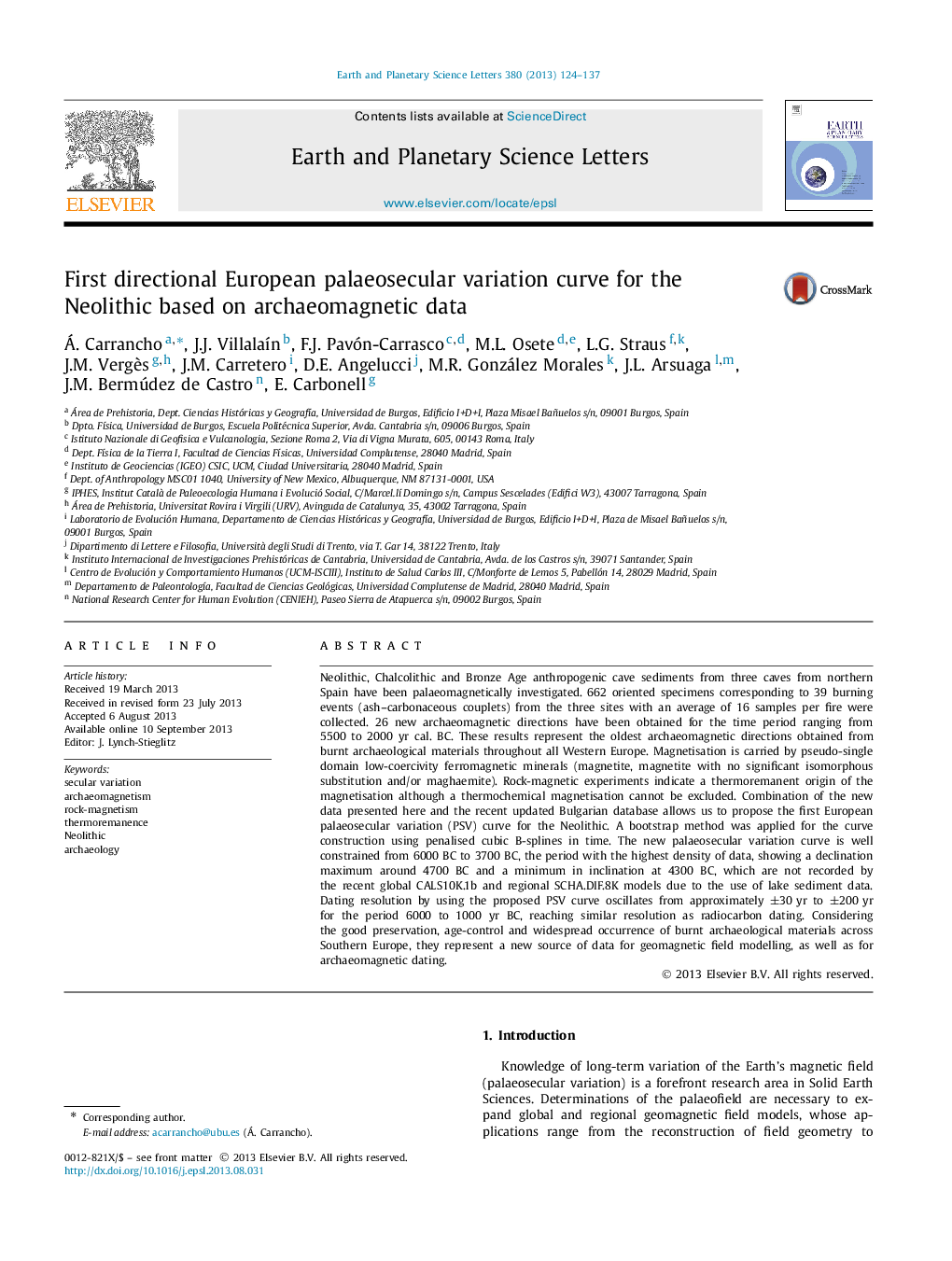| کد مقاله | کد نشریه | سال انتشار | مقاله انگلیسی | نسخه تمام متن |
|---|---|---|---|---|
| 4677051 | 1634776 | 2013 | 14 صفحه PDF | دانلود رایگان |
• Discovery of a new geomagnetic field recorder: anthropogenic cave sediments.
• Oldest archaeomagnetic directions for Western Europe (26 new data; 5500–2000 BC).
• First European directional secular variation curve for the Neolithic based on archaeomagnetic data.
• This new dating curve for the moment has dating resolution as precise as radiocarbon.
• Future use of these materials in archaeomagnetism will increase the accuracy of this dating technique.
Neolithic, Chalcolithic and Bronze Age anthropogenic cave sediments from three caves from northern Spain have been palaeomagnetically investigated. 662 oriented specimens corresponding to 39 burning events (ash–carbonaceous couplets) from the three sites with an average of 16 samples per fire were collected. 26 new archaeomagnetic directions have been obtained for the time period ranging from 5500 to 2000 yr cal. BC. These results represent the oldest archaeomagnetic directions obtained from burnt archaeological materials throughout all Western Europe. Magnetisation is carried by pseudo-single domain low-coercivity ferromagnetic minerals (magnetite, magnetite with no significant isomorphous substitution and/or maghaemite). Rock-magnetic experiments indicate a thermoremanent origin of the magnetisation although a thermochemical magnetisation cannot be excluded. Combination of the new data presented here and the recent updated Bulgarian database allows us to propose the first European palaeosecular variation (PSV) curve for the Neolithic. A bootstrap method was applied for the curve construction using penalised cubic B-splines in time. The new palaeosecular variation curve is well constrained from 6000 BC to 3700 BC, the period with the highest density of data, showing a declination maximum around 4700 BC and a minimum in inclination at 4300 BC, which are not recorded by the recent global CALS10K.1b and regional SCHA.DIF.8K models due to the use of lake sediment data. Dating resolution by using the proposed PSV curve oscillates from approximately ±30 yr±30 yr to ±200 yr±200 yr for the period 6000 to 1000 yr BC, reaching similar resolution as radiocarbon dating. Considering the good preservation, age-control and widespread occurrence of burnt archaeological materials across Southern Europe, they represent a new source of data for geomagnetic field modelling, as well as for archaeomagnetic dating.
Journal: Earth and Planetary Science Letters - Volume 380, 15 October 2013, Pages 124–137
